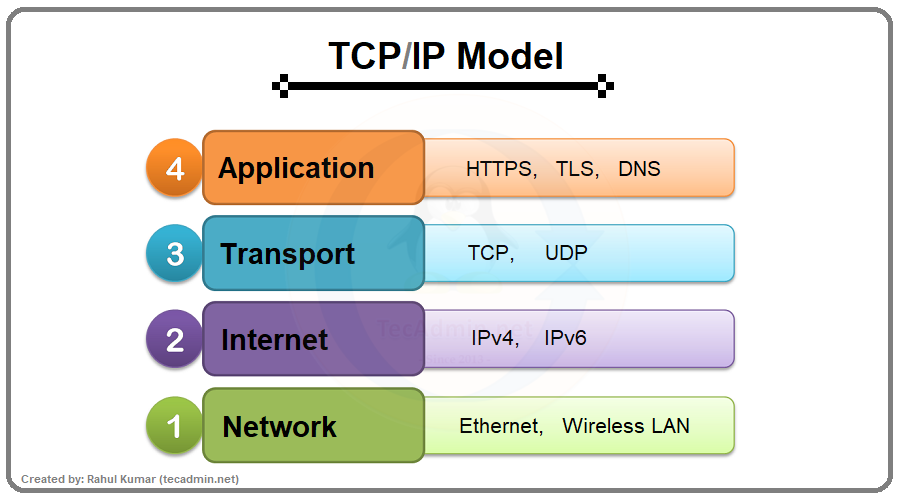The internet has become an essential part of our lives, and it’s hard to imagine a day without it. But have you ever wondered how your computer connects to the internet, or how data is transferred from one device to another? That’s where the TCP/IP model comes in.
TCP/IP, or the Transmission Control Protocol/Internet Protocol, is the backbone of the internet. Invented in the 1970s as a part of a Defense Advanced Research Projects Agency (DARPA) project, the TCP/IP model lays out a set of rules that govern how computers communicate with each other.
Understanding the Layers of TCP/IP
The TCP/IP model is based on a layered architecture, similar to the OSI model. Each layer in the model has a specific role, dealing with a particular aspect of network communication. Let’s dive in and explore each layer.
1. Network Interface Layer
The Network Interface Layer, also known as the Link or Network Access layer, is the lowest layer of the TCP/IP model. It’s responsible for transmitting data over the network medium (such as Ethernet or Wi-Fi) and includes protocols responsible for defining how hardware devices interface with the network.
This layer is all about the nitty-gritty details of how data gets transmitted physically. It includes elements such as how your Ethernet cable plugs into your computer, how Wi-Fi signals get interpreted, and how the binary data gets sent over physical (or wireless) connections.
2. Internet Layer
The Internet Layer, sometimes referred to as the Network Layer, is where IP (Internet Protocol) resides. It’s responsible for addressing, packaging, and routing functions.
This layer involves the IP addresses that you may be familiar with. It takes care of wrapping data up into IP packets, attaching addresses to them, and sending them on their way. Also, it handles routing, which ensures that these packets find the most efficient path to their destination.

3. Transport Layer
The Transport Layer is where TCP (Transmission Control Protocol) comes into play. Its main job is to provide reliable, ordered, and error-checked delivery of data between applications.
At this layer, communication becomes more sophisticated. The Transport Layer takes data from the application and breaks it down into chunks that can be handled by the Network Layer. It’s also where acknowledgements of received packets are sent back and any necessary re-transmissions are handled.
4. Application Layer
The Application Layer, also known as the Process Layer, interacts with software applications that implement a communicating component. This is the layer where HTTP (for web browsing), SMTP (for email), and FTP (for file transfer) protocols operate.
In other words, this layer is all about providing services to the user. When you’re browsing a website, sending an email, or downloading a file, you’re interacting with the Application Layer.
How Does Data Travel Through These Layers?
Let’s take an example to understand the process. Suppose you’re sending an email. Here’s what happens:
- You hit send in your email client, which operates at the Application Layer. The client hands off your message to the Transport Layer.
- The Transport Layer breaks the message into smaller packets of data. It adds a destination port (to identify the email service on the receiving computer) and sends these packets off to the Internet Layer.
- The Internet Layer wraps these packets into IP packets, adding the destination IP address, and sends them to the Network Interface Layer.
- The Network Interface Layer sends these packets over your physical network (like your Wi-Fi or Ethernet connection).
- The packets travel through the internet, possibly passing through many routers and networks until they reach the recipient’s computer.
- On the receiving end, the process is reversed. The packets are unwrapped and reassembled into the original email message.
Conclusion
The TCP/IP model is an incredibly important concept in network communications, forming the foundation of internet connectivity. Understanding how these layers work together to provide reliable, efficient communication is key to grasping many aspects of networking and internet technologies.
The beauty of the TCP/IP model lies in its simplicity and the division of tasks. By breaking down the complex process of communication into smaller parts, each layer can focus on what it does best, creating a seamless and reliable network experience.
So, the next time you send an email or browse a webpage, spare a thought for the hardworking TCP/IP protocols that make it all possible.